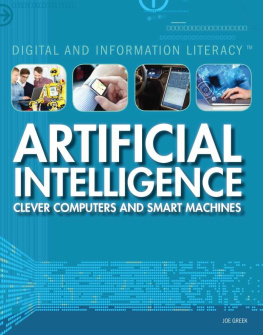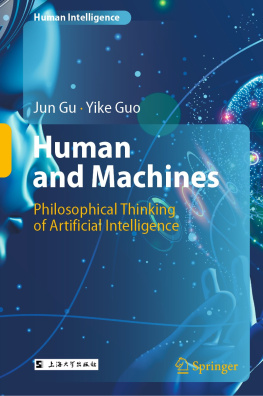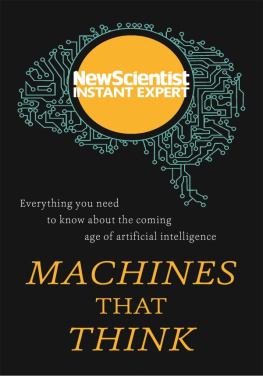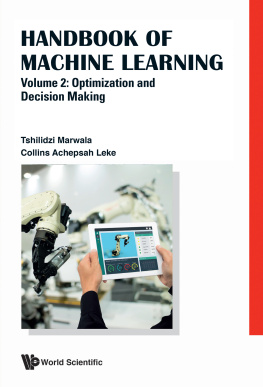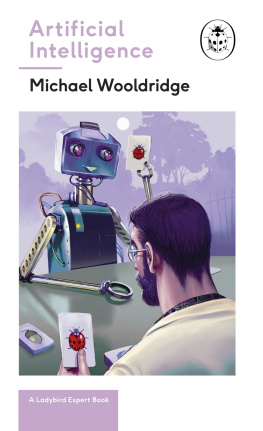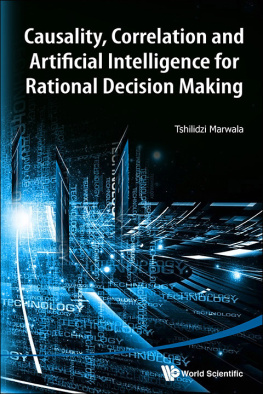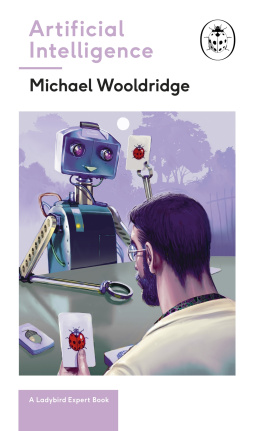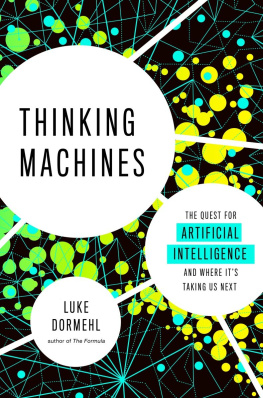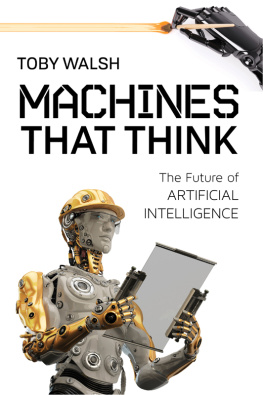Tshilidzi Marwala - Rational Machines and Artificial Intelligence
Here you can read online Tshilidzi Marwala - Rational Machines and Artificial Intelligence full text of the book (entire story) in english for free. Download pdf and epub, get meaning, cover and reviews about this ebook. year: 2021, publisher: Academic Press, genre: Romance novel. Description of the work, (preface) as well as reviews are available. Best literature library LitArk.com created for fans of good reading and offers a wide selection of genres:
Romance novel
Science fiction
Adventure
Detective
Science
History
Home and family
Prose
Art
Politics
Computer
Non-fiction
Religion
Business
Children
Humor
Choose a favorite category and find really read worthwhile books. Enjoy immersion in the world of imagination, feel the emotions of the characters or learn something new for yourself, make an fascinating discovery.

- Book:Rational Machines and Artificial Intelligence
- Author:
- Publisher:Academic Press
- Genre:
- Year:2021
- Rating:4 / 5
- Favourites:Add to favourites
- Your mark:
- 80
- 1
- 2
- 3
- 4
- 5
Rational Machines and Artificial Intelligence: summary, description and annotation
We offer to read an annotation, description, summary or preface (depends on what the author of the book "Rational Machines and Artificial Intelligence" wrote himself). If you haven't found the necessary information about the book — write in the comments, we will try to find it.
Rational Machines and Artificial Intelligence — read online for free the complete book (whole text) full work
Below is the text of the book, divided by pages. System saving the place of the last page read, allows you to conveniently read the book "Rational Machines and Artificial Intelligence" online for free, without having to search again every time where you left off. Put a bookmark, and you can go to the page where you finished reading at any time.
Font size:
Interval:
Bookmark:
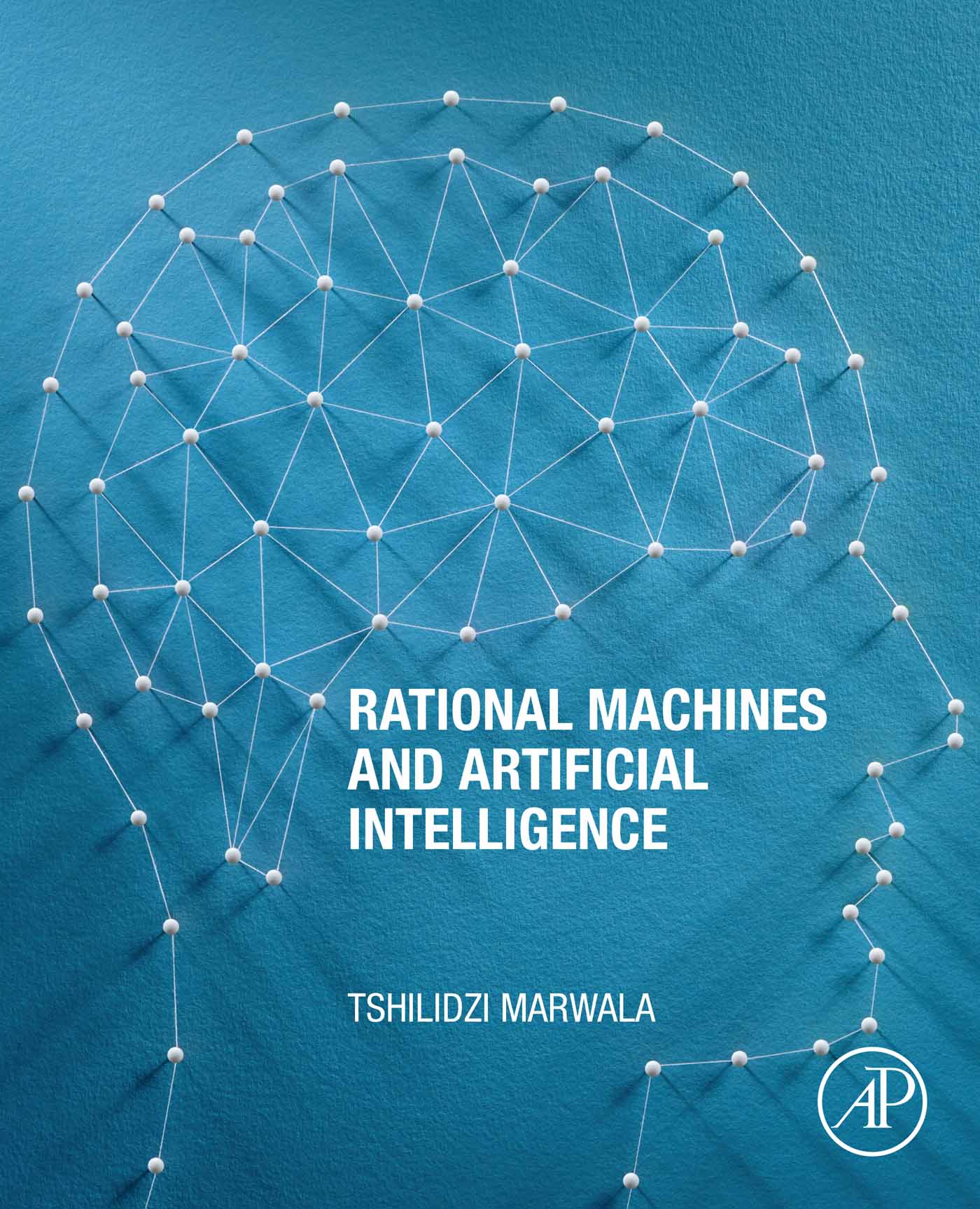
Academic Press is an imprint of Elsevier
125 London Wall, London EC2Y 5AS, United Kingdom
525 B Street, Suite 1650, San Diego, CA 92101, United States
50 Hampshire Street, 5th Floor, Cambridge, MA 02139, United States
The Boulevard, Langford Lane, Kidlington, Oxford OX5 1GB, United Kingdom
Copyright 2021 Elsevier Inc. All rights reserved
No part of this publication may be reproduced or transmitted in any form or by any means, electronic or mechanical, including photocopying, recording, or any information storage and retrieval system, without permission in writing from the publisher. Details on how to seek permission, further information about the Publishers permissions policies and our arrangements with organizations such as the Copyright Clearance Center and the Copyright Licensing Agency, can be found at our website: www.elsevier.com/permissions.
This book and the individual contributions contained in it are protected under copyright by the Publisher (other than as may be noted herein).
Notices
Knowledge and best practice in this field are constantly changing. As new research and experience broaden our understanding, changes in research methods, professional practices, or medical treatment may become necessary.
Practitioners and researchers must always rely on their own experience and knowledge in evaluating and using any information, methods, compounds, or experiments described herein. In using such information or methods they should be mindful of their own safety and the safety of others, including parties for whom they have a professional responsibility.
To the fullest extent of the law, neither the Publisher nor the authors, contributors, or editors, assume any liability for any injury and/or damage to persons or property as a matter of products liability, negligence or otherwise, or from any use or operation of any methods, products, instructions, or ideas contained in the material herein.
Library of Congress Cataloging-in-Publication Data
A catalog record for this book is available from the Library of Congress
British Library Cataloguing-in-Publication Data
A catalogue record for this book is available from the British Library
ISBN 978-0-12-820676-8
For information on all Academic Press publications visit our website at https://www.elsevier.com/books-and-journals
Publisher: Mara Conner
Acquisitions Editor: Chris Katsaropoulos
Editorial Project Manager: Emily Thomson
Production Project Manager: Niranjan Bhaskaran
Cover Designer: Miles Hitchen
Typeset by SPi Global, India

Tshilidzi Marwala, Department of Electrical Engineering, University of Johannesburg, Johannesburg, South Africa
Rationality is a concept that has been studied for more than 2000 years from the times of Socrates to the modern times of Daniel Kahneman. Rationality, simply put, means logical. Throughout these times, rationality has always been about humans. Now that intelligent machines that are powered by AI are becoming common, the rationality of machines is emerging as an essential area of study. Rational agents maximize their net utility. In this book, we use the concept of net utility, which is the difference between the expected utility and the utility cost needed to achieve that expected utility. The utility is the good that is derived from a particular action or object. According to Socrates, that which is good helps and preserves whereas that which is bad or evil corrupts and destroys. Accordingly, rationality is the maximization of that which helps and preserves. Rational or logical agents must meet two criteria: (1) they must achieve their goal or objective, which is to maximize the net utility and (2) they must use the minimum amount of energy to maximize the net utility. For an agent not to maximize the net utility, is like a businessman who leaves money at the marketplace because he has gathered enough for the day. Such a businessman is not acting logically or rationally. Furthermore, not using the minimum amount of energy is akin to going from Cape Town to Johannesburg via London for no other reason except that such a traveler wants to travel from Cape Town to Johannesburg.
This book studies the rationality of machines, especially in the light of the advances in AI, which are enabled by technologies such as deep learning, the abundance of data, and the increase in computational power due to Moores Law. This book studies the concept of bounded or limited rationality, which was proposed by the Nobel Laureate Herbert Simon, of both humans and machines and finds that the bounds or limits of rationality in machines are more flexible than those of humans. It also studies the theory of rational expectation of humans vs machines. The rational expectation is a theory that states that agents cannot be consistently wrong when predicting the future because it can always expand on the information it uses to predict the future. This book finds that machine rational expectation is more accurate than human rational expectation.
The book also studies the theory of rational choice. Rational choice states that if two options are presented and option A offers a higher expected net utility than option B, then a rational agent prefers option A over B. The situation becomes complex if viable options are numerous and unknown. Then when humans make such decisions, they also have to identify all alternative options, which can also be viewed as espousing opportunity costs, and this is computationally expensive. The process of imagining alternatives is called counterfactual thinking. When an intelligent machine is used, the capability to explore alternative options is enhanced and accelerated. Machines are found to be better rational choice agents than human beings. Furthermore, the book introduces rational counterfactuals which are counterfactuals that maximize the attainment of a particular goal. If the alternative option is as good as the most rational option, then this is a rational opportunity cost. The difference between rational opportunity costs and rational counterfactuals is that rational counterfactuals are imagined events and do not have to be practical while rational opportunity costs are viable and practical options that are forgone on making a choice. Machines were found to create more viable rational counterfactuals and opportunity costs than human beings.
Furthermore, this book studies the various properties of rationality. Can rationality be measured? Is rationality subjective? Is group rationality better than individual rationality? Are humans more rational than machines? Do machines make markets more rational than humans? Are machines more ethical than humans? This book concludes that it is difficult to measure rationality and therefore determines that rationality is subjective. Furthermore, it concludes that groups are more rational than individuals. It found that markets that are populated by machines are more rational and efficient than human-based markets. In conclusion, machines were found to be more rational than humans.
This chapter presents the idea of machine rationality. It evaluates how intelligent machines are transforming the world. Some of the technologies that are transforming the world include artificial intelligence (AI), the Internet of things (IoT), robotics, advanced materials, and biotechnology. This transformation is collectively called the fourth industrial revolution (4IR). The 4IR has resulted in the emergence of intelligent machines of which machine rationality is an important characteristic. This chapter outlines the concept of machine rationality and expands on the first, second, and third industrial revolutions which as essential to understanding the 4IR.
Font size:
Interval:
Bookmark:
Similar books «Rational Machines and Artificial Intelligence»
Look at similar books to Rational Machines and Artificial Intelligence. We have selected literature similar in name and meaning in the hope of providing readers with more options to find new, interesting, not yet read works.
Discussion, reviews of the book Rational Machines and Artificial Intelligence and just readers' own opinions. Leave your comments, write what you think about the work, its meaning or the main characters. Specify what exactly you liked and what you didn't like, and why you think so.

